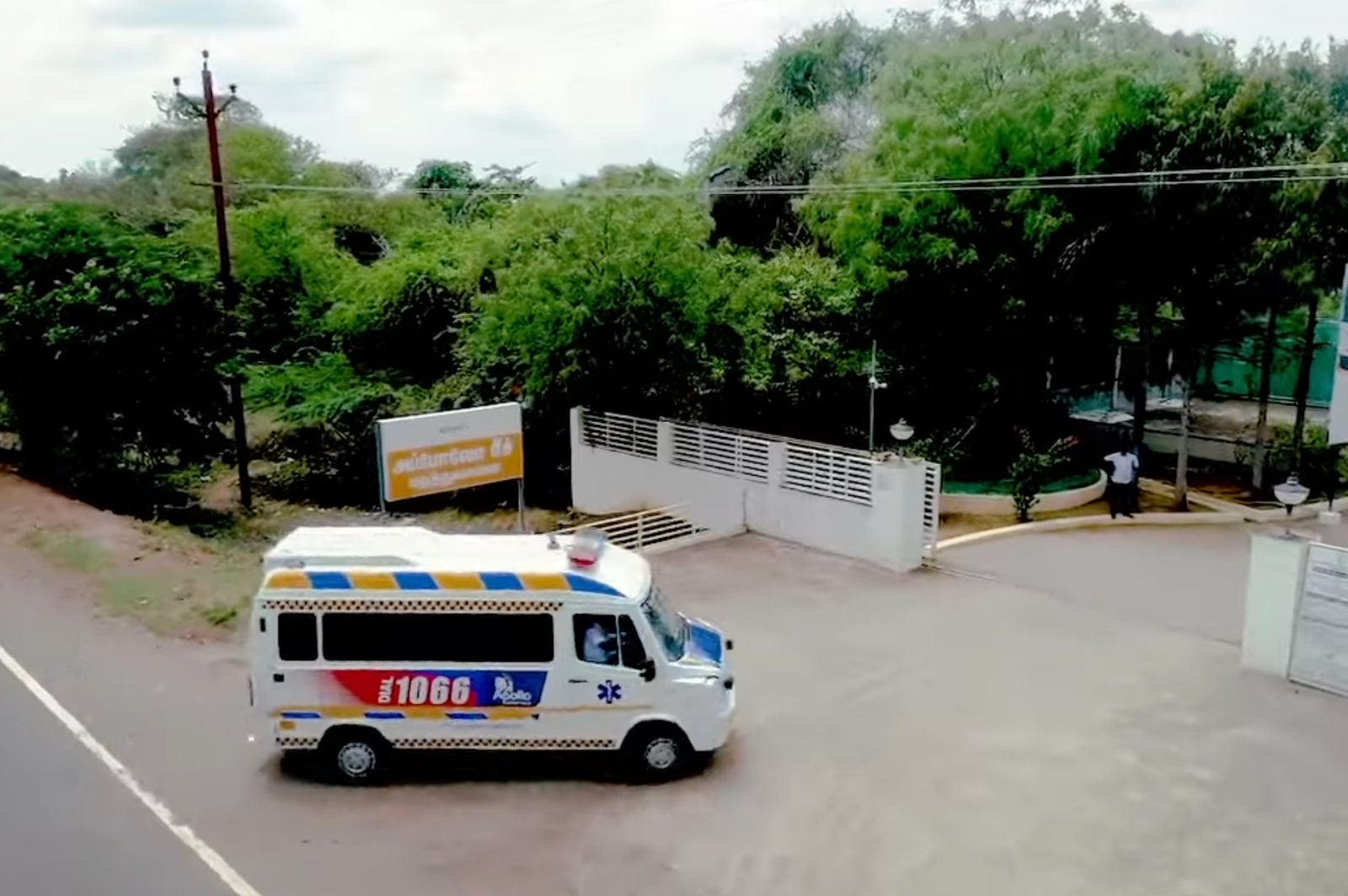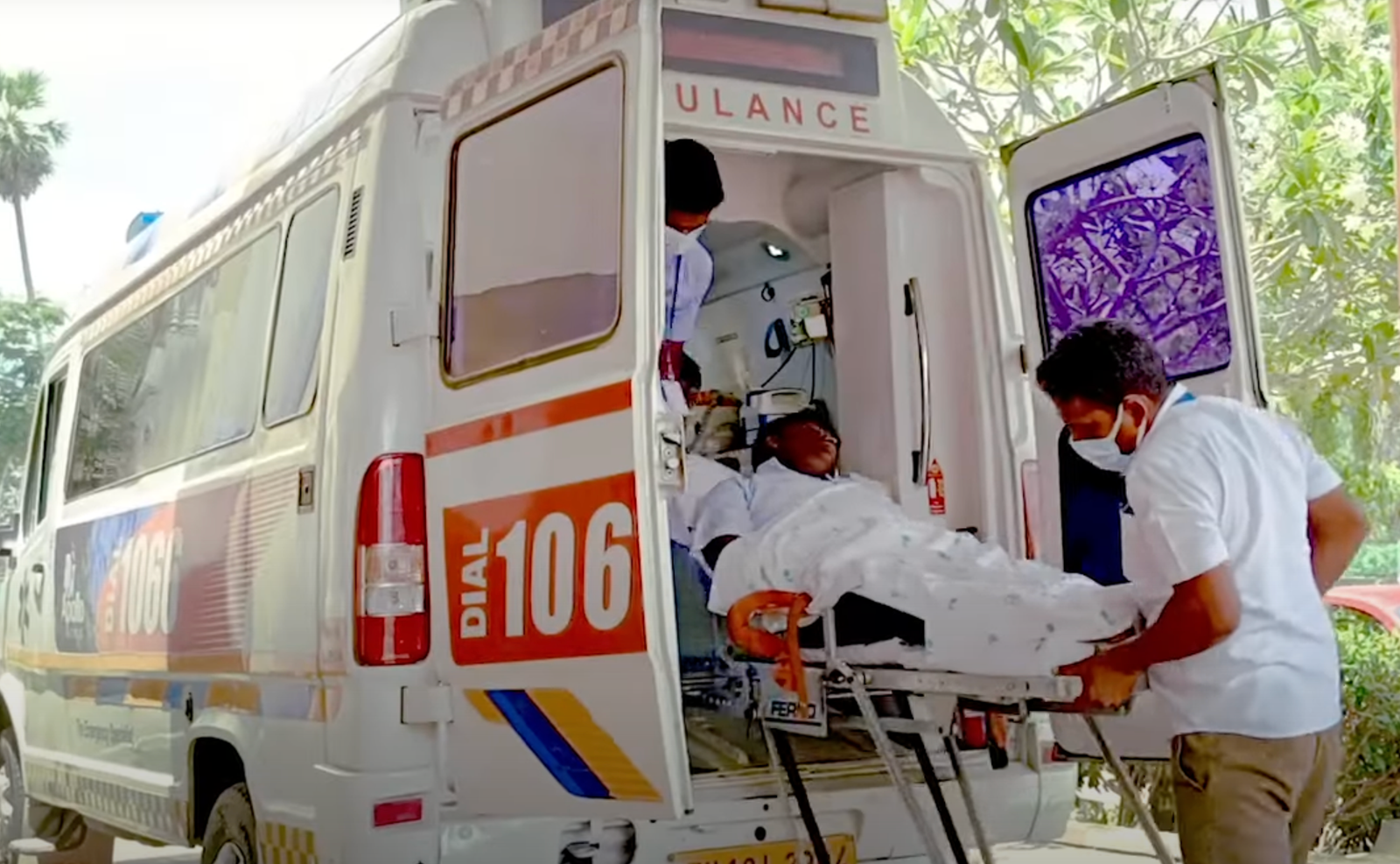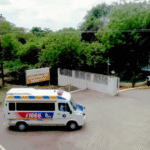Death time puzzle: A patient is being transported by ambulance from Rourkela to Bhubaneswar. Four hours on the road, the patient suffered a cardiac arrest and died in the ambulance at 2:00 PM. A flat line was recorded on the monitor for two hours, from 2:00 PM to 4:00 PM. The patient arrived at the destination hospital at 4:00 PM, with the ECG still showing a flat line. The doctor in the emergency room retrieves the monitor’s record and confirms that the flat line was recorded since 2:00 PM.
The family insists on writing the time of death as 2.00 PM since the patient had a flat line.
Questions:
- What is the place and time of death to be recorded on the death certificate?
- If death is declared at 2:00 PM, is it legal for an ambulance to transport the body? Can ambulances transport deceased individuals?
- What are the implications of a doctor’s presence versus absence in the ambulance en route?
- If a doctor knowingly transports a deceased person in an ambulance, what legal protections are available to them, and how can these be lawfully utilised?
- What is the correct procedure to declare death at 2.00 PM and dispose of the body?
Legal, Ethical, and Clinical Aspects of Death Declaration in India
This example can be viewed from three different perspectives:-
1. How to diagnose death?
2. Was death certified by only a Registered Medical Practitioner (RMP)?
3. What is the time/ place of death?
4. What is the correct action as per the law and as per the practice? Is the law relating to this situation binding, or is there a safe play zone in this situation?
𝙏𝙞𝙢𝙚 𝙤𝙛 𝘿𝙚𝙖𝙩𝙝
Death is a clinical diagnosis. No law in India mandates an ECG or any machine test to declare death. However, in a hospital situation, we generally perform an ECG for record-keeping purposes.
Death is a clinical diagnosis. A doctor (Registered Medical Practitioner – RMP) certifies death based on the absence of vital signs:
- No pulse
- No heart sounds
- No respiration
- Fixed and dilated pupils
Law in India (Births and Deaths Registration Act, 1969):
It only requires that a death be certified by a Registered Medical Practitioner after personal examination.
There is no legal requirement for ECG, EEG, or any machine test.

Hospital Practice:
In hospitals, especially ICUs, an ECG strip is often recorded and kept in the file for documentation purposes, but this is not a legal necessity, only a supportive record.
So a flat line on the monitor can be combined with clinical examination of the patient by the RMP on board and declare death.
The flat line noted in the ambulance is only indicative; it cannot be treated as the official time of death unless a doctor was present and certified it.
𝙋𝙡𝙖𝙘𝙚 𝙤𝙛 𝘿𝙚𝙖𝙩𝙝
The place of death is the place of the patient when an RMP declares death after physical examination.
If it is on the road at Angul, that may be mentioned or the hospital where the doctor declared death (destination hospital in Bhubaneswar).
𝙒𝙝𝙤 𝘾𝙖𝙣 𝘿𝙚𝙘𝙡𝙖𝙧𝙚 𝘿𝙚𝙖𝙩𝙝 𝙞𝙣 𝙄𝙣𝙙𝙞𝙖?
- As per Indian law, only a registered medical practitioner (RMP) can legally certify death. Paramedics, nurses, or ambulance staff cannot certify and issue a death certificate.
- Ambulance records (flat line on monitor, CPR attempts) are medical evidence, but not the legal declaration of death.
𝙎𝙞𝙩𝙪𝙖𝙩𝙞𝙤𝙣 1- 𝘿𝙤𝙘𝙩𝙤𝙧 𝙤𝙣 𝙗𝙤𝙖𝙧𝙙
So if an RMP is present on the ambulance, he is fully authorised to examine the patient and see signs of life, and he may declare death on the roadside in the Ambulance and issue a death certificate.
𝙎𝙞𝙩𝙪𝙖𝙩𝙞𝙤𝙣 2- 𝘿𝙤𝙘𝙩𝙤𝙧 𝙣𝙤𝙩 𝙤𝙣 𝙗𝙤𝙖𝙧𝙙
Time of death is recorded when the doctor at the destination confirms the absence of life signs (apnea, asystole, no cardiac activity).
If the Ambulance is having a registered medical practitioner on board, then He/she can declare death with full legality.
If no doctor is present on ambulance and even if death has actually happened it does not bind (and cannot do) the doctor on destination to mention retrospective time.
In fact, even if the doctor at the destination wants to mention the retrospective time he cannot mention it in the death certificate since he was not physically present at that time.
𝘿𝙚𝙖𝙩𝙝 𝙞𝙣 𝙖𝙢𝙗𝙪𝙡𝙖𝙣𝙘𝙚 𝙗𝙚𝙘𝙤𝙢𝙚𝙨 𝙖𝙣 𝙈𝙇𝘾 𝙖𝙣𝙙 𝙨𝙝𝙤𝙪𝙡𝙙 𝙗𝙚 𝙞𝙣𝙛𝙤𝙧𝙢𝙚𝙙 𝙩𝙤 𝙩𝙝𝙚 𝙥𝙤𝙡𝙞𝙘𝙚 (𝙞𝙙𝙚𝙖𝙡𝙡𝙮)
If the family insists on real-time, the ambulance can be diverted to a nearby hospital where a doctor (RMP) competent to declare death is present and declares death.
Under family pressure time of death cannot be fixed in the past if it was not declared at that time. Even a doctor cannot go back in time and declare death until and unless he himself was present at that time and had examined the patient physically and certified death in real time.
Therefore, in this case, although the patient was asystolic since 2:00 PM, the legally valid time of death will be 4:00 PM at Bhubaneswar hospital ER, when the attending doctor examined and certified death.
𝙒𝙝𝙖𝙩 𝙞𝙨 𝙩𝙞𝙢𝙚 𝙤𝙛 𝙙𝙚𝙖𝙩𝙝 𝙞𝙣 𝙩𝙝𝙚 𝙙𝙚𝙖𝙩𝙝 𝙘𝙚𝙧𝙩𝙞𝙛𝙞𝙘𝙖𝙩𝙚?
In usual circumstances of the non-MLC cases, when the time of death is not legally challenged, the death certificate mentions the time of death, which was the time at which an RMP examines and certifies death.
𝙏𝙞𝙢𝙚 𝙤𝙛 𝙘𝙚𝙧𝙩𝙞𝙛𝙞𝙘𝙖𝙩𝙞𝙤𝙣 𝙤𝙛 𝙙𝙚𝙖𝙩𝙝 𝙞𝙨 𝙣𝙤𝙩 𝙩𝙝𝙚 𝙨𝙖𝙢𝙚 𝙖𝙨 𝙩𝙞𝙢𝙚 𝙤𝙛 𝙖𝙘𝙩𝙪𝙖𝙡 𝙙𝙚𝙖𝙩𝙝.
Time of certification ≠ actual time of death.
In the given example of the death in an ambulance, even if the time of actual death was two hours before in the Ambulance, the death certificate will mention the time at which it was examined, and death was certified.

𝙄𝙛 𝙩𝙝𝙚 𝙛𝙖𝙢𝙞𝙡𝙮 𝙞𝙣𝙨𝙞𝙨𝙩𝙨 𝙤𝙣 2:00 𝙋𝙈:
The family cannot legally insist on mentioning any time, as the procedures mentioned above are clear, and that is the view and binding on the medical team.
If the death was not declared at 2.00 PM, under no circumstances can it be mentioned back in time.
This is not a matter of legal debate but a matter of laid procedures.
In MLC cases, the declared time of death on a certificate is not necessarily the actual or suspected time of death; it refers only to when a doctor formally records it. Any mention of time of death usually means the declared, not the actual, time.
Police cases and MLC may do postmortem and the postmortem report may put a possible time of death, which may be different from the declared time of death in the death certificate.
- The hospital can attach the ambulance ECG record as supportive evidence in medical notes. But this is a clinical finding and part of clinical notes.
- But the death certificate cannot carry 2:00 PM, since that would mean the doctor declared death outside his/her presence, which is legally invalid.
- If there are legal implications (insurance, police, post-mortem), the death is treated as having occurred on hospital arrival at 4 PM.
𝘿𝙚𝙖𝙩𝙝 𝙞𝙣 𝘼𝙢𝙗𝙪𝙡𝙖𝙣𝙘𝙚 𝙙𝙪𝙧𝙞𝙣𝙜 𝙏𝙧𝙖𝙣𝙨𝙥𝙤𝙧𝙩 (𝘾𝙤𝙢𝙢𝙤𝙣 𝙋𝙧𝙖𝙘𝙩𝙞𝙘𝙚)
If the patient develops cardiac arrest and does not respond to resuscitation:
- The ambulance team continues resuscitation till handover at the destination, unless instructed otherwise (e.g., palliative transport).
- The legal declaration of death is made at the receiving hospital by the doctor.
- Even if the Ambulance has an RMP on board, they generally transport the patient while resuscitation continues enroute. Declaring death en Enroute brings more problems for all parties than any solution. So this is generally practised.
- In this situation law does not bind him to forcefully declare death on the road since he may take the instance of continuous resuscitation and possible hope of giving final treatment at the destination hospital.
If he wants to declare death on the road, then he can do that but then he cannot transfer the dead body legally to the ambulance. An ambulance is for live patients.
𝘾𝙖𝙣 𝙖𝙣 𝙖𝙢𝙗𝙪𝙡𝙖𝙣𝙘𝙚 𝙘𝙖𝙧𝙧𝙮 𝙖 𝙙𝙚𝙖𝙙 𝙗𝙤𝙙𝙮 𝙞𝙣 𝙄𝙣𝙙𝙞𝙖?
𝙇𝙚𝙜𝙖𝙡 𝙋𝙤𝙨𝙞𝙩𝙞𝙤𝙣 𝙞𝙣 𝙄𝙣𝙙𝙞𝙖
- Ambulance = vehicle for transport of live patients.
- Dead body transport = separate category (mortuary van / hearse van).
- Technically, once a person is declared dead, the ambulance should not continue as a “patient ambulance.”
𝙍𝙚𝙖𝙡-𝙬𝙤𝙧𝙡𝙙 𝙥𝙧𝙖𝙘𝙩𝙞𝙘𝙚:
- If death occurs en route and is certified by the doctor on board, the body is often carried to the destination hospital or sometimes home, especially if the distance is short, because arranging another vehicle on the highway is impractical.
- There is no explicit law prohibiting the same as long as documentation is proper and the handover is done at the destination.
𝙎𝙩𝙖𝙣𝙙𝙖𝙧𝙙 𝙋𝙧𝙖𝙘𝙩𝙞𝙘𝙚 & 𝙂𝙪𝙞𝙙𝙖𝙣𝙘𝙚
If death is declared on road:
- The doctor documents death (time, place, circumstances).
- The body can be transported in the same ambulance to the nearest hospital, police station (if medico-legal), or to home, depending on the family’s request.
- The ambulance log must clearly state: “Patient declared dead at _ by Dr. _. Body transported to _.”
This avoids disputes later and protects the doctor/ambulance service legally.
𝙃𝙤𝙨𝙥𝙞𝙩𝙖𝙡 𝙋𝙧𝙤𝙩𝙤𝙘𝙤𝙡
- Most hospitals (NABH compliant) allow the ambulance to bring the dead body to ER if the patient dies during transport.
- In the ER: doctor confirms, records, and hands over the body.
- If the family insists on direct home transport after onboard declaration, ideally:
- Police notification is required (especially if sudden/unexpected death).
- The death certificate should be issued only after local jurisdiction verification (where the death occurred).
𝙋𝙖𝙩𝙞𝙚𝙣𝙩’𝙨 𝙙𝙚𝙖𝙩𝙝 𝙙𝙪𝙧𝙞𝙣𝙜 𝙩𝙧𝙖𝙣𝙨𝙥𝙤𝙧𝙩 𝙩𝙝𝙧𝙤𝙪𝙜𝙝 𝙖𝙢𝙗𝙪𝙡𝙖𝙣𝙘𝙚 𝙗𝙚𝙘𝙤𝙢𝙚𝙨 𝙖𝙣 𝙈𝙇𝘾 𝙖𝙣𝙙 𝙣𝙚𝙚𝙙𝙨 𝙩𝙤 𝙗𝙚 𝙧𝙚𝙥𝙤𝙧𝙩𝙚𝙙 𝙩𝙤 𝙩𝙝𝙚 𝙋𝙤𝙡𝙞𝙘𝙚
Why it Becomes an MLC
1. Unnatural or unexplained circumstance – Patient was alive when transported; death occurred in transit without certified medical supervision.
2. Doubt of negligence or foul play – Police need to rule out accident, assault, poisoning, procedural mishap, delay in transport, or medical negligence.
3. Legal requirement – Hospitals are bound under the Code of Criminal Procedure (CrPC) to inform the police of any death that is:
- Sudden
- Unnatural
- Unexplained
- Occurring in transit, custody, or unusual circumstances.
So the case will be treated as an MLC
So in practical terms, if you are clear of your intentions and do not want more harassment of the family and yourself, it is better to continue Resuscitation and reach your destination or a nearby hospital.











